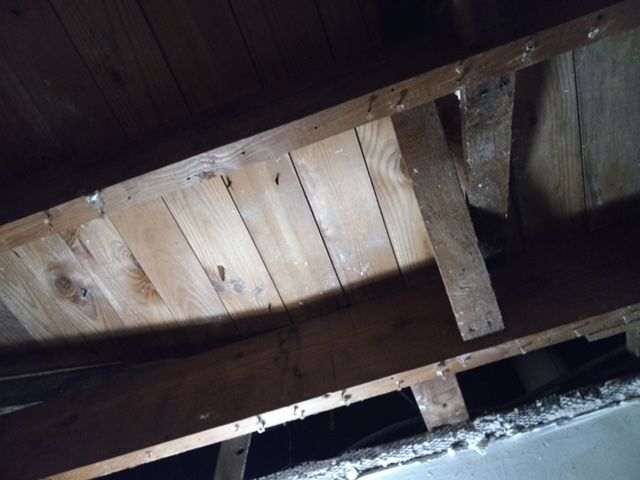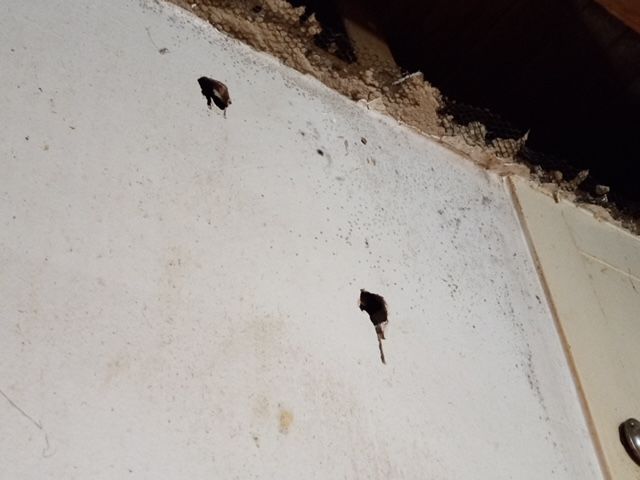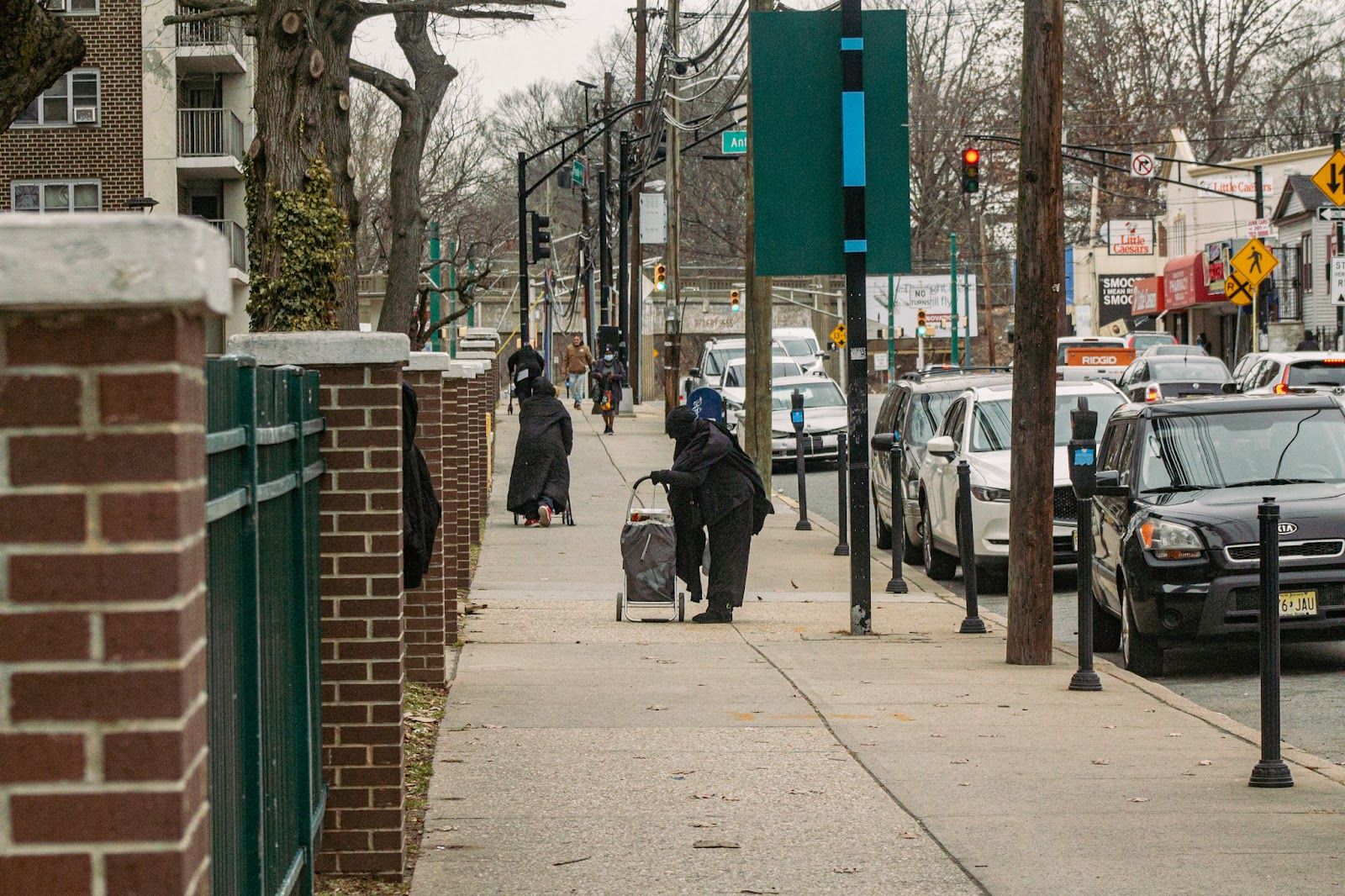A Hard Truth and Reflection on Life at Stephen Crane Village: Sam's Story
This personal essay is about the Stephen Crane Village public housing complex in Newark, NJ. It is a story about the deteriorating conditions of the housing complex, the residents who live there, and the support they need

On November 9, 2020, my mother returned home after a month of being hospitalized after a fall caused by a viral infection. That same night, she wound up back in the hospital after her legs gave out climbing the stairs. Later, it was discovered that she had pneumonia and suffered a mini heart attack. Previously, The viral infection that was the cause of hospitalization had been from mold exposure. There were three gaping holes where the ceiling fell in from water leakage in our kitchen. One of those holes had mushrooms sprouting out of them. Before the fall, my mother often sat in the kitchen, only to fall ill and return upstairs. The conditions of the house had never been this bad before.
Growing up in Stephen Crane Village had always been pleasant; It was clean, neighbors looked out for one another, we had basketball courts and a recreational center where the kids would have something to do over the summertime. During the Holidays, management would host events for the children, such as food, toy, and clothing drives, and have get-togethers in the rec room. The units were well maintained and preserved; If you had an issue with repairs, management would resolve it that same day; if not, the next day.
Those days are long gone.
Stephen Crane is one of the few housing complexes in Newark, NJ, and one of the oldest. It is also one of the latest housing complexes to fall victim to privatization, a process that has been going on since the mid-70s after tenants in the Stella Wright Projects went on a rent strike to protest the inhumane conditions they face, a rent strike in which the tenants won. The strike brought the Newark Housing Authority (NHA) to the brink of bankruptcy. As punishment, a redevelopment process to knock down high-rise towers was conducted. Columbus Homes Projects on 7 th Avenue were one of the first casualties of this process when demolished in 1994. Soon after that, Kretchmer Homes, Seth Boyden Terrace, Baxter Terrace, Terrell Homes, and, as mentioned above, Stella Wright Projects were also demolished to make way for condominiums and townhouses.

Over 15 years, the conditions at Stephen Crane have steadily declined, despite being under the Rental Assistance Development (RAD). RAD is a program that the Obama administration created in 2012 to repair the crumbling conditions in housing. But what RAD does is permanently displace residents by telling them that they’ll temporarily move them so that they can properly work on repairs in the unit. When the smoke clears, the low-income complex becomes a mixed-income area. The majority of the tenants are Black and Latino, many elderly and disabled. Not many of them can afford to move, so they're forced to deal with inhumane conditions. The maintenance staff is overwhelmed, as most maintenance workers were sent over to Stephen Crane elderly buildings. Repairs often go unaddressed or completely ignored. My mother has fallen five times over eight years because housing was supposed to fix our floor and lay new tiles. Management just ripped the tiles out of the floor back in 2012 and never laid the tiles. There are holes in the walls from mice eating through them. A rat even entered my unit last year. But housing refused to fix it because COVID cases were high.
I am not the only person dealing with poor conditions. With the help of the Progressive Labor Party, the organization I am a part of, I’ve been going door to door to get to know my neighbors and ask whether they’ve been experiencing conditions similar to mine. Surprisingly, they were receptive and started sharing their experiences with their conditions and issues with management.
“There’s mold all over my walls,” said one tenant, who wished to remain anonymous. I have asthma, and the mold makes it worse,”
“I’m so tired,” said another tenant, who had been living in Stephen Crane for five years, “I’m so tired of going down to the office for complaints they have on file, and still, no one comes out to fix it.”

Other complaints about management ranged from delayed or ignored repairs, rats running rampant in their backyards and trash cans, insufficient heat. One resident, a mother of a four-year-old child, reported that only one heater worked of all the heaters in the house, and that was upstairs. Even more dire are miscommunications with rent.
“One time, management called me saying I didn’t pay my rent,” said one angry tenant, “they didn’t register it in the system. I had to call Downtown to straighten it out.”
The same tenant also reported that the police had once harassed her son, a school teacher at a local charter school when he was sitting on the porch.
The children have nothing to do. The basketball rims were removed, no special programs for the kids to participate in, so most of the teenagers walk around aimlessly with nothing to do but sit on their porches, smoking marijuana and playing music loudly, much to the chagrin of the older neighbors.
Occasional crime has also had residents stressed. One resident requested to move after her house was burglarized last June when we spoke with her last November.
“They broke into my house and pointed guns at me,” said the woman, “I put in a request to move, and Housing still hasn’t responded!”
Another resident, with visible bullet holes in her door, reported to us that previously, her neighbors had an altercation with someone, and the person returned and started shooting.
“I was still in bed; had I been sitting in my living room, I would have gotten struck by a stray bullet. Housing still hasn’t done anything to fix my door.”
Being put on the list to move is a long, tedious process that could take years. My own family has been on the waiting list since 2018. Housing has started to hand out section 8 vouchers for people to move quickly, but what happens if a resident doesn’t qualify for section 8? So, now people have to deal with their situation while waiting for something better to come along; often, it’s too late when the opportunity to move comes.

I have been attempting to organize in Stephen Crane Village, trying to convince residents to do so. We have a Tenant’s Association, but as far as I know, only a food drive happens every third Saturday of the month. The residents are also hesitant, mainly out of fear of being targeted by Newark Housing Authority management and losing their housing. They reported to PLP and me, after having a rally this past November, that they were scared to speak up and were the ones who suggested we conduct a survey, which we have been doing, documenting responses. It has been slow, and this will be a long-term process, but PLP and I are committed to this struggle. Persistence, consistency, and courage are the keys to getting more tenants to commit.
Meanwhile, NHA has kept most tenants in the dark about Zoom meetings and RAD’s Plans. There used to be a time when the entire complex would consistently receive notices from management about an upcoming meeting. Things are changing, and not for the better.
The situation in Stephen Crane is indicative of the ever-growing housing crisis. It’s not just happening in Newark and other gentrified cities, and it’s happening worldwide. Homes are deliberately left in poor conditions or vacant while greedy slumlords collect the taxes on them. People are either experiencing homelessness or suffering and dying from the poor, squalid conditions they are forced to contend with because they can’t afford to move. Under capitalism, housing will always be commodified and used as a weapon to keep working-class folks in line. Housing rights are human rights, not a privilege. Every human being deserves to live safely and comfortably. NHA and the city of Newark need to be held accountable for the horrid conditions tenants face.
I love my city. The people who have lived here all their lives have a story that makes Newark what it is. But the people can’t afford to live here anymore. With all the pretty murals popping up in the city, it doesn’t cover the dilapidated buildings needing repair. Nor does it address the increasing number of people who can’t sleep because of bedbugs biting them up and rodents entering their unit or the growing number of people sleeping in Penn Station because of the lack of affordable housing and mental healthcare. The tenants of Stephen Crane deserve better. The city of Newark deserves better. The people deserve better, period.
Sam Rhodes is a young Newark resident who is bravely sharing their story to bring attention to the inhabitable conditions that they and other residents are facing as you read this story. Sam is also a Newark Reporting Fellow in our community media incubator.
How to support Sam and other residents:
- Send donations to support Sam so that they can continue to advocate and organize for themselves and on behalf of others. Cash App: $sammydeltoro87 || Venmo:@Sameerah-Rhodes
- Email and call the Director of NHA Victor Cirilo: vcirilo@newarkha.org; Newark Housing Authority 973–273–6000 & 1–866–642–4373 to request that the inhabitable units in Stephen Crane Village are addressed and residents are adequately housed.
- Follow @stephen_crane_stories on Instagram.
If you have immediate questions or concerns or can provide support, please email our project coordinator, Lenise at lenise@newarkstories.com